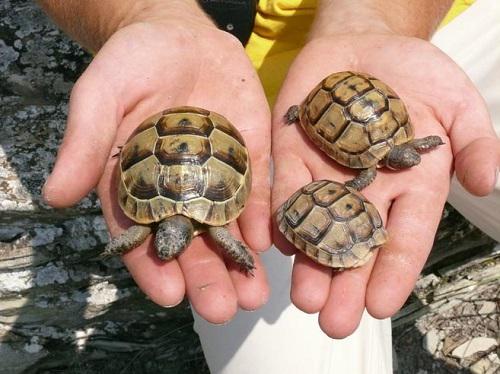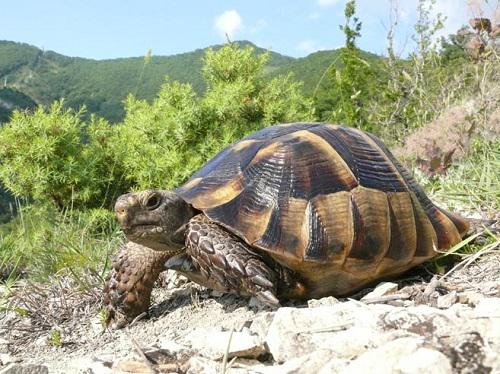Mark Pestov
Other projects
11 Jul 2006
Conservation of the Mediterranean Tortoise, (Testudo graeca nikolskii) on the Black Sea Coast of the Caucasus, Russian Federation: Evaluation, Education, and Population Augmentation
2 Aug 2010
Study and Conservation of the Mediterranean Spur-Thighed Tortoise (Testudo graeca) in the Caucasus (Project "Attention: A Turtle!")
This project is focused on a consolidation of efforts of herpetologists, official organisations for nature conservation, and the general public for the conservation of the Mediterranean spur-thighed tortoise (Testudo graeca), which is included in the IUCN Red List of Threatened Animals, Red Data Book of Russian Federation, and CITES (App. II).

Project “Study and conservation of the Mediterranean spur-thighed tortoise in Caucasus” has been implemented by regional Society for Protection of Amphibians and Reptiles (ecological centre “Dront”, Nizhny Novgorod, Russia) since 2006 with the support of A First RSG (2006), International Fund for Animal Welfare (IFAW) and Society Europaea Herpetologica (SEH).

This project is focused on a consolidation of efforts of herpetologists, official organisations for nature conservation, and the general public for the conservation of the Mediterranean spur-thighed tortoise (Testudo graeca), which is included in IUCN Red List of Threatened Animals, Convention on International trade in endangered species of wild fauna and flora (СIТЕS, App. II), Bern Convention (App. II), Red Data Book of RF and regional Red Data Books. Nowadays areas of inhabitation of Testudo graeca are reduced and divided into some genetically isolated populations. The tortoise encountered in the west of the Caucasus inside the Krasnodar Territory and Abkhazia Republic is classed as a special subspecies T. graeca nikolskii. Inside Dagestan Republic there is another subspecies T. graeca pallasi. The main reasons for decline in number, shrinkage and fragmentation of its habitat are anthropogenic transformation of the landscape and illegal hunting for trade.
The project includes an estimation of distribution and number of Testudo graeca at Caucasus, finding key places of it’s inhabitation and estimation of their protection; prevention of illegal catching and selling of tortoises in contact with the State structures for Nature Conservation; collection of tortoises, which were illegal caught, from their owners and returning them to the wild; choice the partners for setting up of the Center of rehabilitation and nursery for Mediterranean tortoise; making wide public support goals of the project (publications, TV - plots and so on).
Geography of the project is still growing. In 2007 we worked not only in the West Caucasus, but also in the North Caucasus (Dagestan Republic). Within four weeks of our stay in Dagestan we visited key places of Testudo graeca pallasi habitation and estimated condition of its populations, which upon the whole proved better than in the West Caucasus, for the unstable political and economical environment in Dagestan hinders development of tourism and wild animals trade in this region.
The Project's main news for 2008:
1. We have begun building the first Russia's nursery for Testudo graeca in territory of the privately owned safari-park, located on the southern slope of the Markhotsky ridge in Gelendzhik town (Krasnodar Territory).
2. In June, 2008, in the central market of Sochi city under our initiative the agents of the Krasnodar Territory Supervisory Natural Recourses Management Service in Sochi confiscated two spur-thighed tortoises from illegal trading. These tortoises were returned to the wild.